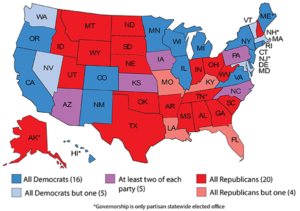At The Washington Monthly, Bill Scher outlines “The Voting Rights Package That Can Pass the Senate: A plan that can get past Joe Manchin, the Republicans, and still help voters.” As Scher writes, “The 72-year-old West Virginian made a big mistake when he drafted his compromise bill by himself, then sprung it on the rest of Congress, without any Republicans buying in ahead of time. So when Stacey Abrams announced she supported Manchin’s proposal, Republicans unfairly—perhaps blinkered by racism—presumed it was a raw deal. Missouri Republican Senator Roy Blunt was, well, blunt: “When Stacey Abrams immediately endorsed Senator Manchin’s proposal, it became the Stacey Abrams substitute, not the Joe Manchin substitute.”….A compact bill, prioritizing a few measures with distinct appeal to both parties, would be more likely to produce a bipartisan breakthrough. I would suggest a three-pronged bill.” Scher goes on to flesh out the three elements he thinks could get traction: Require voter i.d.; “enfranchise non-incarcerated felons and ex-felons; and tougher penalties and measures to insure a “fair and impartially conducted election process.” Read Scher’s article for more details.
In her article, “We Just Got Our Clearest Picture Yet Of How Biden Won In 2020,” Danielle Kurtzleben writes at npr.org: “We know that President Biden won the 2020 election (regardless of what former President Donald Trump and his allies say). We just haven’t had a great picture of howBiden won….That is until Wednesday, when we got the clearest data yet on how different groups voted, and crucially, how those votes shifted from 2016. The Pew Research Center just released its validated voters’ report, considered a more accurate measure of the electorate than exit polls, which have the potential for significant inaccuracies….The new Pew data shows that shifts among suburban voters, white men and independents helped Biden win in November, even while white women and Hispanics swung toward Trump from 2016 to 2020….To compile the data, Pew matches up survey respondents with state voter records. Those voter files do not say how a person voted, but they do allow researchers to be sure that a person voted, period. That helps with accuracy, eliminating the possibility of survey respondents overreporting their voting activity. In addition, the Pew study uses large samples of Americans — more than 11,000 people in 2020.
Among “the big takeaways” Kurtzleben cites: “While Pew found Trump winning the suburbs by 2 points in 2016, Biden won them by 11 points in 2020, a 13-point overall swing. Considering that the suburbs accounted for just over half of all voters, it was a big demographic win for Biden….That said, Trump gained in both rural and urban areas. He won 65% of rural voters, a 6-point jump from 2016. And while cities were still majority-Democratic, his support there jumped by 9 points, to 33%….In 2020, men were nearly evenly split, with 48% choosing Biden to Trump’s 50%. That gap shrank considerably from 2016, when Trump won men by 11 points. In addition, this group that swung away from Trump grew as a share of the electorate from 2016 — signaling that in a year with high turnout, men’s turnout grew more. White men were a big part of the swing toward Biden. In 2016, Trump won white men by 30 points. In 2020, he won them again, but by a substantially slimmer 17 points….in 2016, white women were split 47% to 45%, slightly in Trump’s favor but not a majority….This year, however, it appears that Trump did win a majority of white women. Pew found that 53% of white women chose Trump this year, up by 6 points from 2016….Black voters didn’t shift significantly from 2016. They remained Democratic stalwarts, with 92% choosing Biden — barely changed from four years earlier. Nearly three-quarters of Asian voters also voted for Biden, along with 6 in 10 Hispanic voters….”
Charlie Cook explains why “Biden Is on a Political Ledge With Transportation, Crime” at The Cook Political Report: “As this column pointed out earlier this week, with the economy firing on all eight cylinders, the purpose of this legislation has changed from shoring up and stimulating growth to the substance of the measure itself—the long-ignored and deteriorating transportation systems, as well as water and sewer lines and expanding broadband….The danger for House Democrats and the left is that if the party is seen as holding hostage much needed deferred maintenance on our infrastructure in order to advance their green climate change and social welfare agenda items, that could be a sticky problem in competitive districts and states, especially those with large suburban populations. Of course those pushing hardest for the green and social programs are those from the safest of districts and states, so they tend to be less cognizant or appreciative of the political danger….The other political move by Biden this week was his Wednesday speech on the uptick in violent crime and what can be done about it. The address was a tacit acknowledgement that law and order did pop up as a reason for some swing voters to take an unexpected detour away from the Democratic ticket in the closing weeks of the campaign. Since the 1960s, in fact, Democrats have often been perceived as “soft on crime.”….Last fall’s challenge for Democrats was less the straightforward issue of crime on the streets but of lawlessness in the streets, when in quite a few cities peaceful and lawful protests spun out of control. Republicans were able to raise enough questions in swing voters minds that Democrats could not be trusted to preserve order.”




